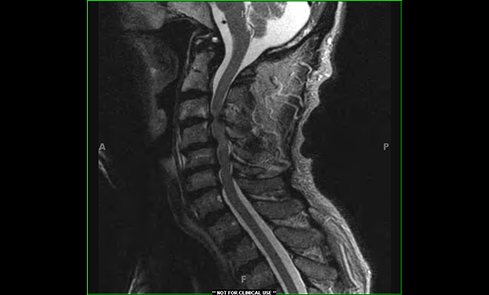 Narrow canal, called lumbar spinal stenosis in medicine, is the calcified bone and connective tissue around the spinal cord causing compression. It is usually seen in patients above 55 years and is more frequent in females than males. If the spinal canal is narrow by birth, it can be seen in earlier ages. There is a connective tissue that covers and protects the spinal cord and its branches at every level called ligamentum flavum. This tissue is ossified with ageing or increased calcification due to osteoporosis, squeezes the spinal cord and causes compression.
Narrow canal, called lumbar spinal stenosis in medicine, is the calcified bone and connective tissue around the spinal cord causing compression. It is usually seen in patients above 55 years and is more frequent in females than males. If the spinal canal is narrow by birth, it can be seen in earlier ages. There is a connective tissue that covers and protects the spinal cord and its branches at every level called ligamentum flavum. This tissue is ossified with ageing or increased calcification due to osteoporosis, squeezes the spinal cord and causes compression.
As a result of this compression, there may be symptoms like pain, burning and pins-and-needles sensation and difficulty walking in both legs. The patient feels the need to stop and rest due to leg pain and cramps even when walking a short distance. S/he leans forward while sitting to relieve. If the disease advances the numbness and burning sensation in legs wakes the patient up at night. Another symptom indicating advanced disease is frequent cramping in legs. In the most advanced stage, there is a loss of sexual function and urinary continence. In the early stage where there is only numbness and burning sensation, physical therapy, swimming and exercises are recommended.
If the narrowing is advanced and the patient feels the need to rest frequently while walking or wakes up at night due to numbness, surgery is inevitable. In the old times, spinal canal was opened bilaterally and the backbone of the spine was completely removed for narrow spine surgery. Spine statics are shown to be compromised in these patients and titanium screws are introduced to stabilize the spine. Even today, this is a surgery performed in patients with compromised spine statics and is efficient when performed in experienced hands. There are 3 golden rules to get benefit from this surgery (as in any surgery): 1- Accurate diagnosis 2- Highly experienced surgeon 3- Optimal hospital and operating room conditions.
In patients with intact spine statics, microsurgical technique can achieve recovery without titanium screws. What matters here is not the argument for the superiority of the operation with or without screws, but determining the patient’s needs by an experienced physician. As you can anticipate, one surgical technique being optimal for all patients does not fit scientific reason. The key is to determine which patients would benefit from which technique and this is the essence of art of medicine. In the technique without screws, a small incision is made to the side of the spine where the pain is more and the bones and ossified connective tissues that bulge around the spinal cord are cleaned with a tool called “high-speed drill” that removes bone tissues by spinning too fast. Compression and bulging on the contralateral side can also be cleaned by properly positioning the patient. This surgery can only be performed using high-speed drill and modern microscopes. As in lumbar herniated disc operations, patients can stand up a few hours after surgery, can be discharged the same day and can go back to their regular lives within a couple of days. There is no risk of disability of paralysis in our narrow canal surgeries unless the patient presents with paralysis after avoiding surgery for years. Even in this situation there can be certain interventions possible but the improvement depends on how long the patient was in this paralysis condition.
Compression on the spinal cord and nerves are removed in these surgeries. The body starts to heal slowly only after the compression is elevated. Therefore, it is important for patients with spinal stenosis to consult a doctor before the permanent nerve damage starts.

NARROW SPINAL CANAL IN BACK

NARROW SPINAL CANAL IN NECK

